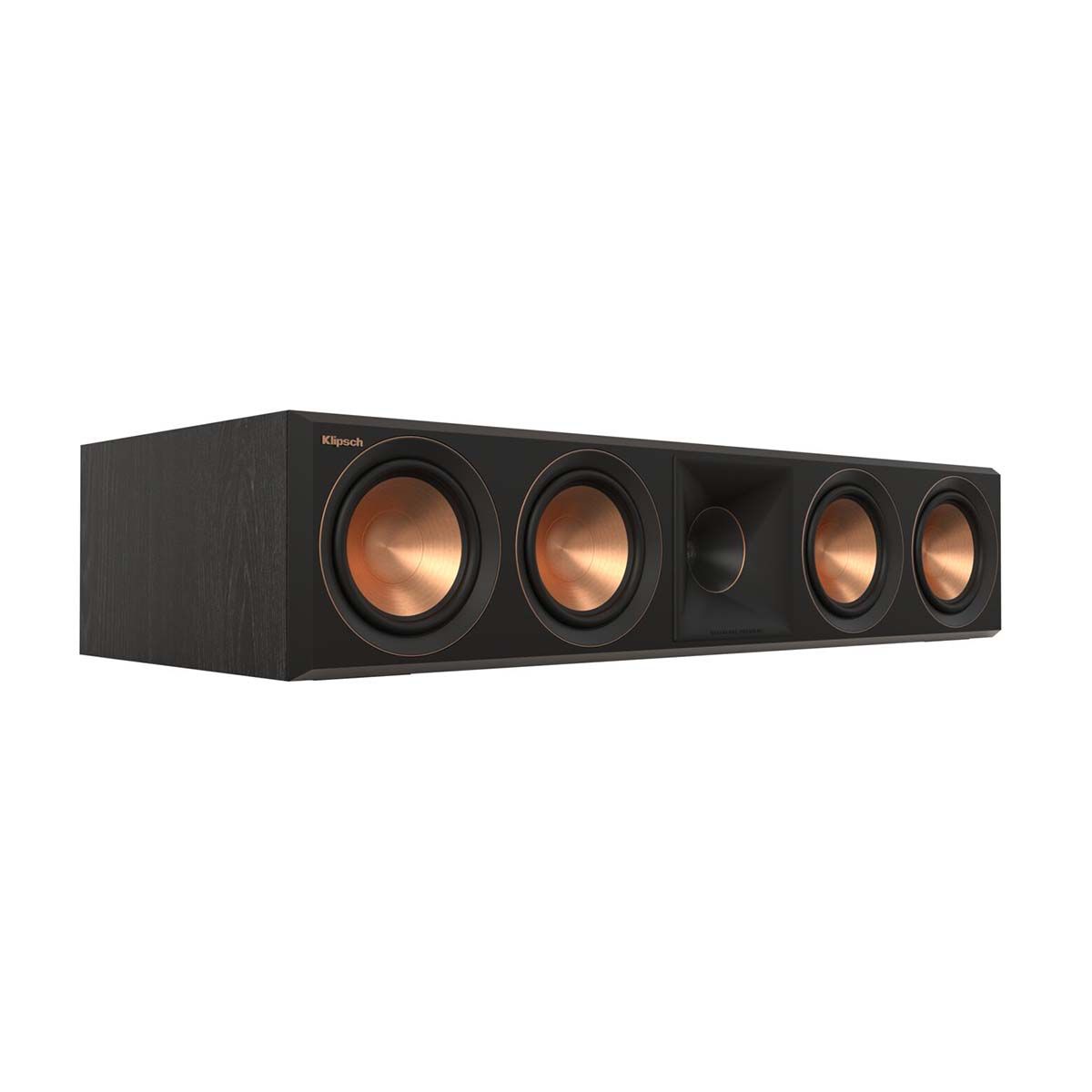Foreword / YouTube Video Review
These speakers were loaned to me by Audio Advice for review. I was not paid for this review and no one has gotten a chance to see this review before it was published.
The review on this website is a brief overview and summary of the objective performance of this speaker. It is not intended to be a deep dive. Moreso, this is information for those who prefer “just the facts” and prefer to have the data without the filler. The video below has more discussion on proper implementation and things to look for when purchasing center channels. I encourage you to watch this to go along with the data you will see in this review as it will help you understand the importance of the data.
Information and Photos
Specs from the manufacturer can be found here.
- 1" LTS (Linear Travel Suspension) titanium diaphragm tweeter with Tractrix® horn
- four 5-1/4" Cerametallic™ cone woofers
- frequency response: 50-25,000 Hz (± 3dB)
- sensitivity: 96 dB
- power handling: up to 150 watts RMS
- impedance: 8 ohms
- bass-reflex design with rear-firing Tractrix port
- magnetic grille protects drivers and looks stylish
- furniture-grade walnut vinyl with scratch-resistant design and satin-painted baffles
- aluminum binding post speaker terminals with audiophile-grade internal speaker wiring
- cork pads on bottom add stability and security while helping decouple the speaker from surfaces
- dimensions (measured by Crutchfield): 32-3/16"W x 6-15/16"H x 15-1/8"D
- weight: 36.3 lbs.
- warranty: 5 years
The current price is approximately $799 USD for the single speaker.
CTA-2034 (SPINORAMA) and Accompanying Data
All data collected using Klippel’s Near-Field Scanner. The Near-Field-Scanner 3D (NFS) offers a fully automated acoustic measurement of direct sound radiated from the source under test. The radiated sound is determined in any desired distance and angle in the 3D space outside the scanning surface. Directivity, sound power, SPL response and many more key figures are obtained for any kind of loudspeaker and audio system in near field applications (e.g. studio monitors, mobile devices) as well as far field applications (e.g. professional audio systems). Utilizing a minimum of measurement points, a comprehensive data set is generated containing the loudspeaker’s high resolution, free field sound radiation in the near and far field. For a detailed explanation of how the NFS works and the science behind it, please watch the below discussion with designer Christian Bellmann:
The reference plane in this test is at the tweeter.
Measurements are provided in a format in accordance with the Standard Method of Measurement for In-Home Loudspeakers (ANSI/CTA-2034-A R-2020). For more information, please see this link.
CTA-2034 / SPINORAMA:
The On-axis Frequency Response (0°) is the universal starting point and in many situations it is a fair representation of the first sound to arrive at a listener’s ears.
The Listening Window is a spatial average of the nine amplitude responses in the ±10º vertical and ±30º horizontal angular range. This encompasses those listeners who sit within a typical home theater audience, as well as those who disregard the normal rules when listening alone.
The Early Reflections curve is an estimate of all single-bounce, first-reflections, in a typical listening room.
Sound Power represents all of the sounds arriving at the listening position after any number of reflections from any direction. It is the weighted rms average of all 70 measurements, with individual measurements weighted according to the portion of the spherical surface that they represent.
Sound Power Directivity Index (SPDI): In this standard the SPDI is defined as the difference between the listening window curve and the sound power curve.
Early Reflections Directivity Index (EPDI): is defined as the difference between the listening window curve and the early reflections curve. In small rooms, early reflections figure prominently in what is measured and heard in the room so this curve may provide insights into potential sound quality.
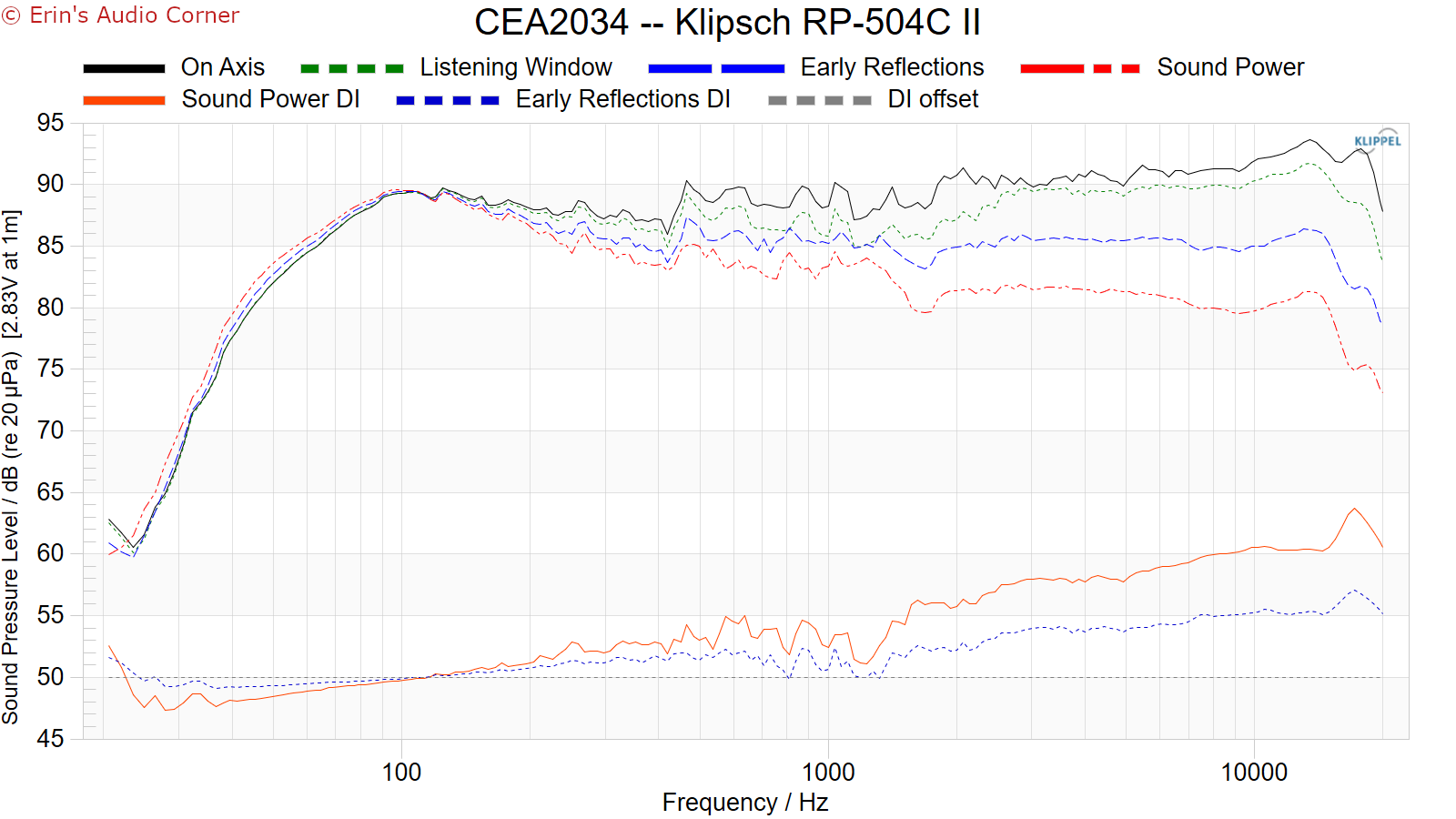
Early Reflections Breakout:
Floor bounce: average of 20º, 30º, 40º down
Ceiling bounce: average of 40º, 50º, 60º up
Front wall bounce: average of 0º, ± 10º, ± 20º, ± 30º horizontal
Side wall bounces: average of ± 40º, ± 50º, ± 60º, ± 70º, ± 80º horizontal
Rear wall bounces: average of 180º, ± 90º horizontal

Estimated In-Room Response:
In theory, with complete 360-degree anechoic data on a loudspeaker and sufficient acoustical and geometrical data on the listening room and its layout it would be possible to estimate with good precision what would be measured by an omnidirectional microphone located in the listening area of that room. By making some simplifying assumptions about the listening space, the data set described above permits a usefully accurate preview of how a given loudspeaker might perform in a typical domestic listening room. Obviously, there are no guarantees, because individual rooms can be acoustically aberrant. Sometimes rooms are excessively reflective (“live”) as happens in certain hot, humid climates, with certain styles of interior décor and in under-furnished rooms. Sometimes rooms are excessively “dead” as in other styles of décor and in some custom home theaters where acoustical treatment has been used excessively. This form of post processing is offered only as an estimate of what might happen in a domestic living space with carpet on the floor and a “normal” amount of seating, drapes and cabinetry.
For these limited circumstances it has been found that a usefully accurate Predicted In-Room (PIR) amplitude response, also known as a “room curve” is obtained by a weighted average consisting of 12 % listening window, 44 % early reflections and 44 % sound power. At very high frequencies errors can creep in because of excessive absorption, microphone directivity, and room geometry. These discrepancies are not considered to be of great importance.

Horizontal Frequency Response (0° to ±90°):

Vertical Frequency Response (0° to ±40°):

Horizontal Contour Plot (normalized):
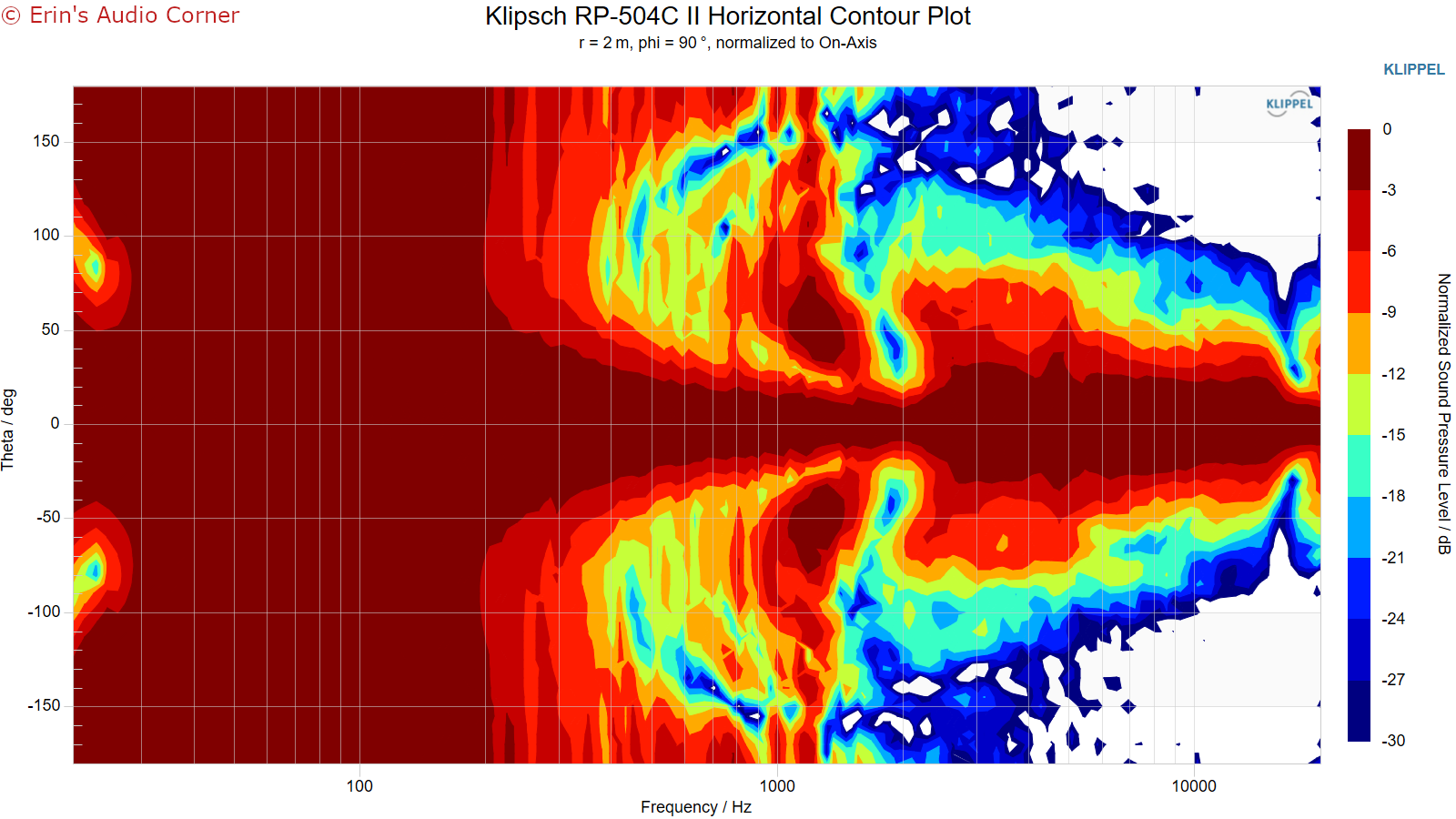
Vertical Contour Plot (normalized):
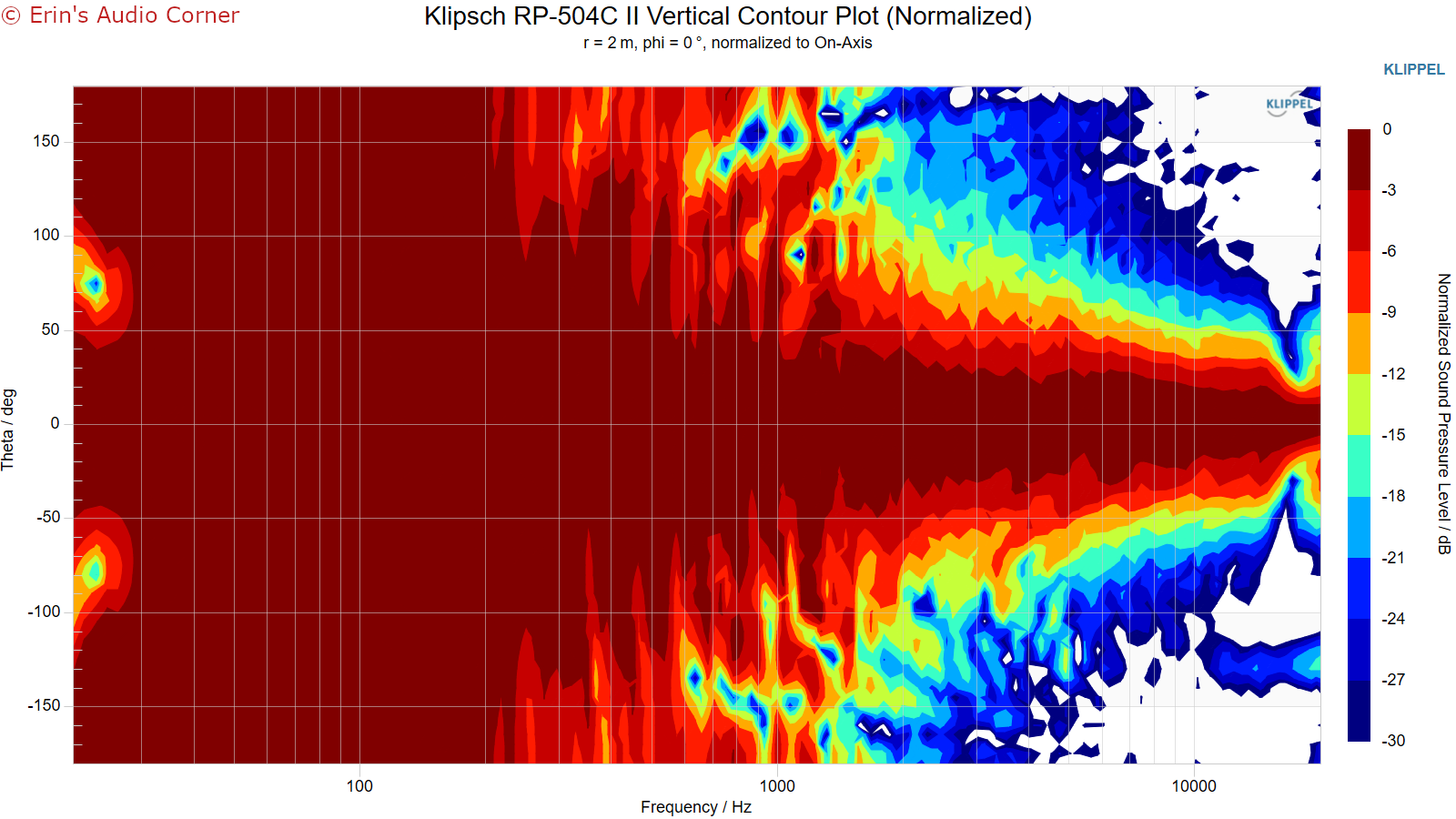
“Globe” Plots
Horizontal Polar (Globe) Plot:
This represents the sound field at 2 meters - above 200Hz - per the legend in the upper left.
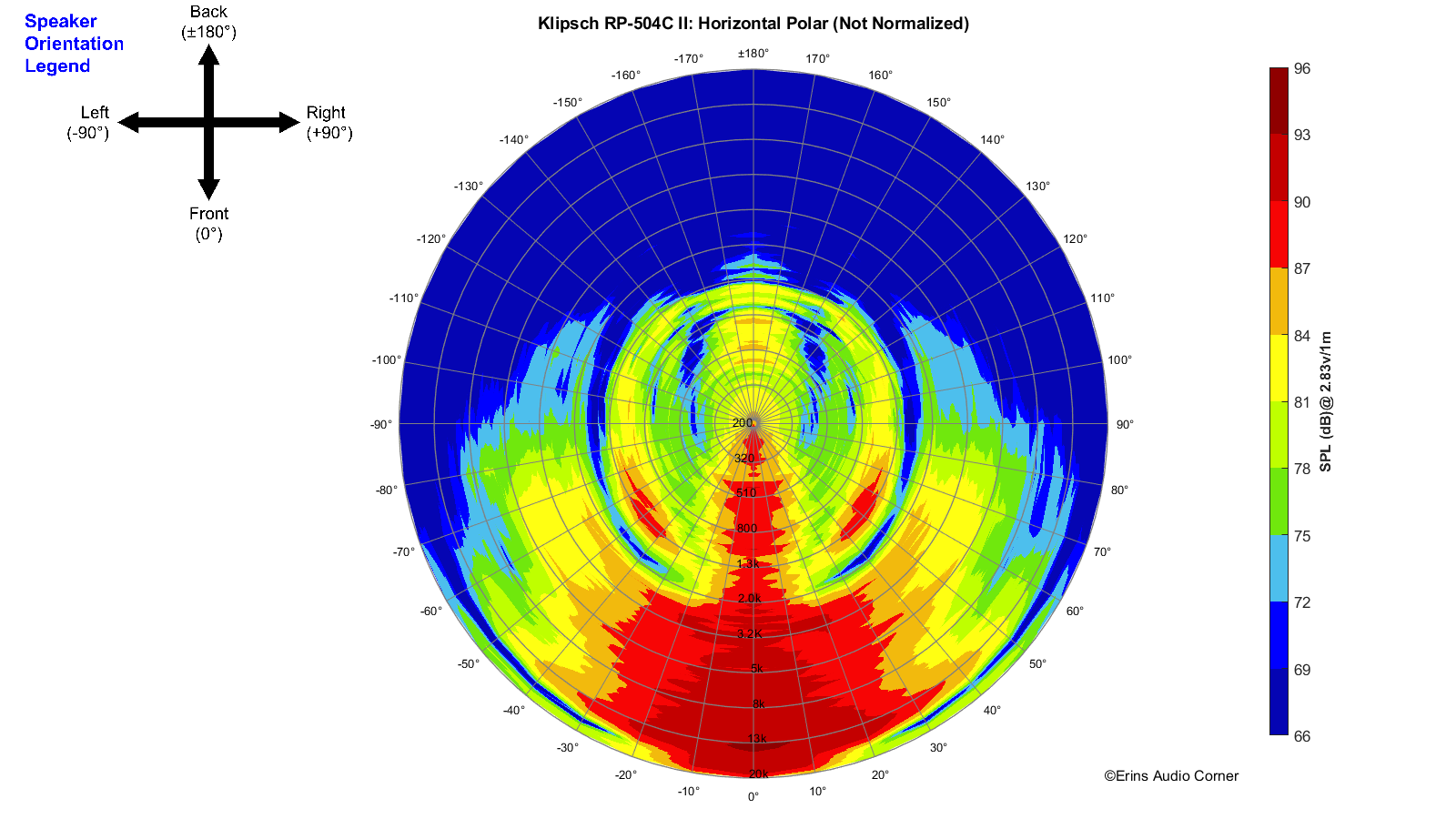
Vertical Polar (Globe) Plot:
This represents the sound field at 2 meters - above 200Hz - per the legend in the upper left.
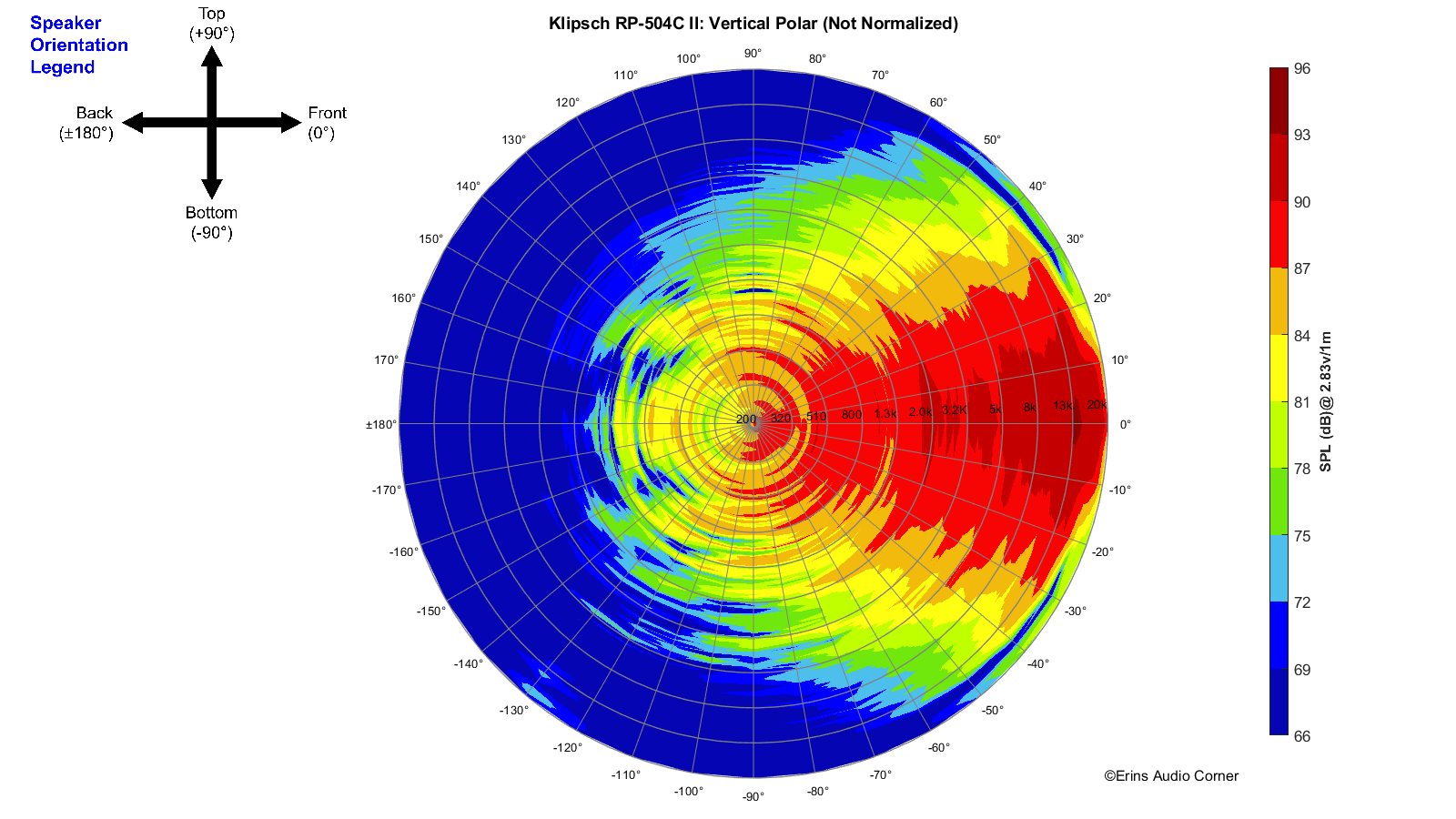
Additional Measurements
Response Linearity
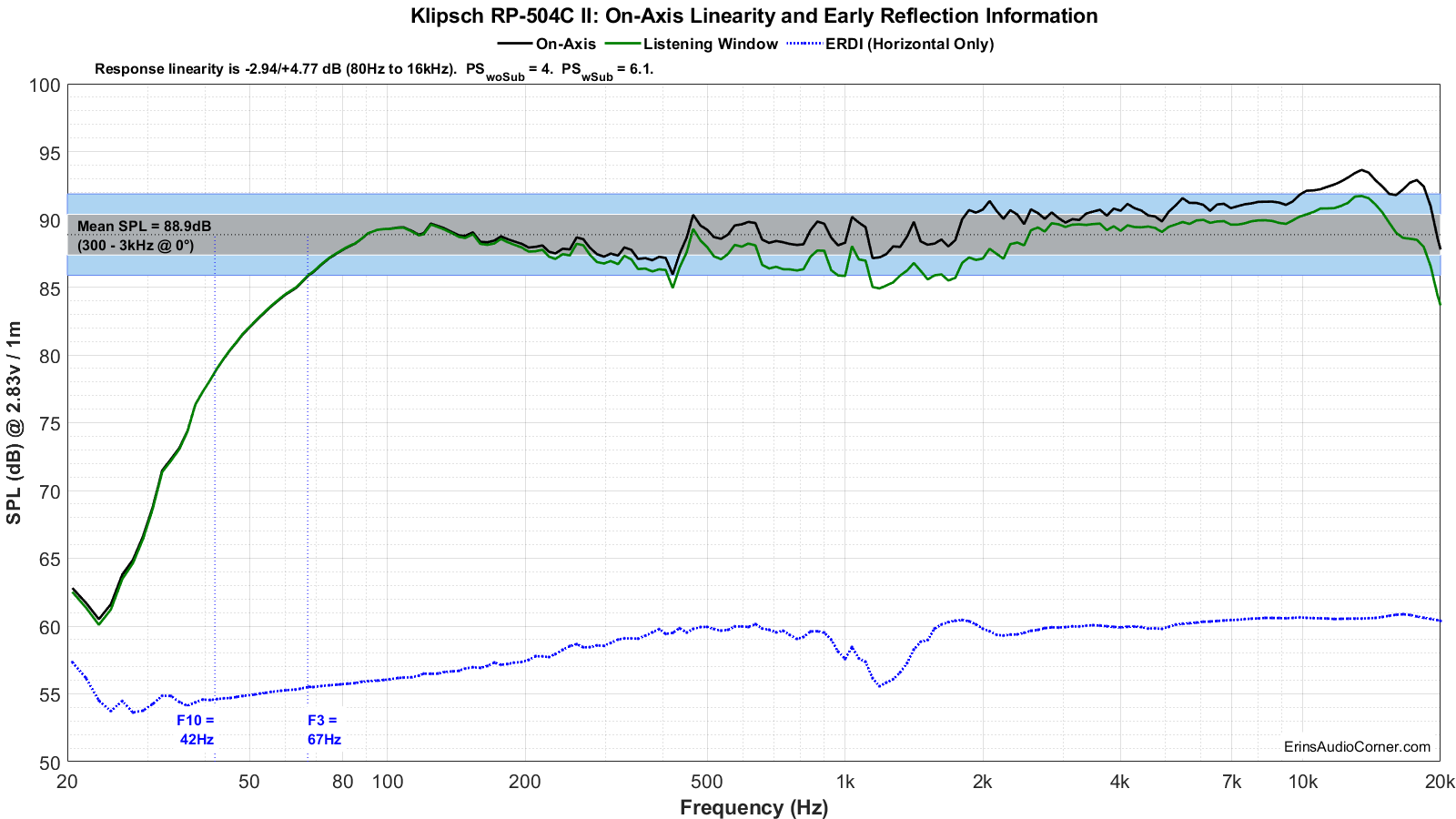
Impedance Magnitude and Phase
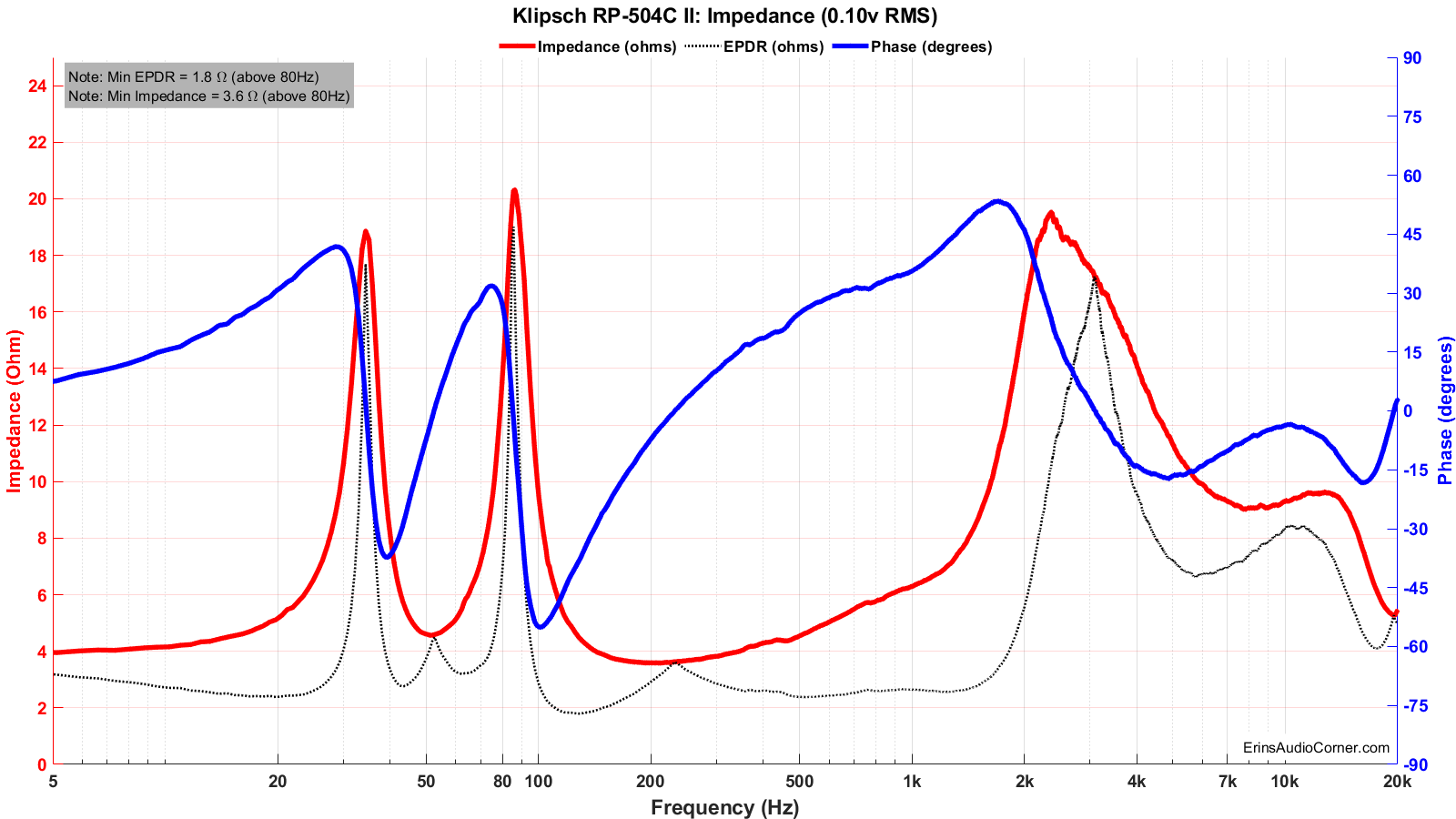
Step Response
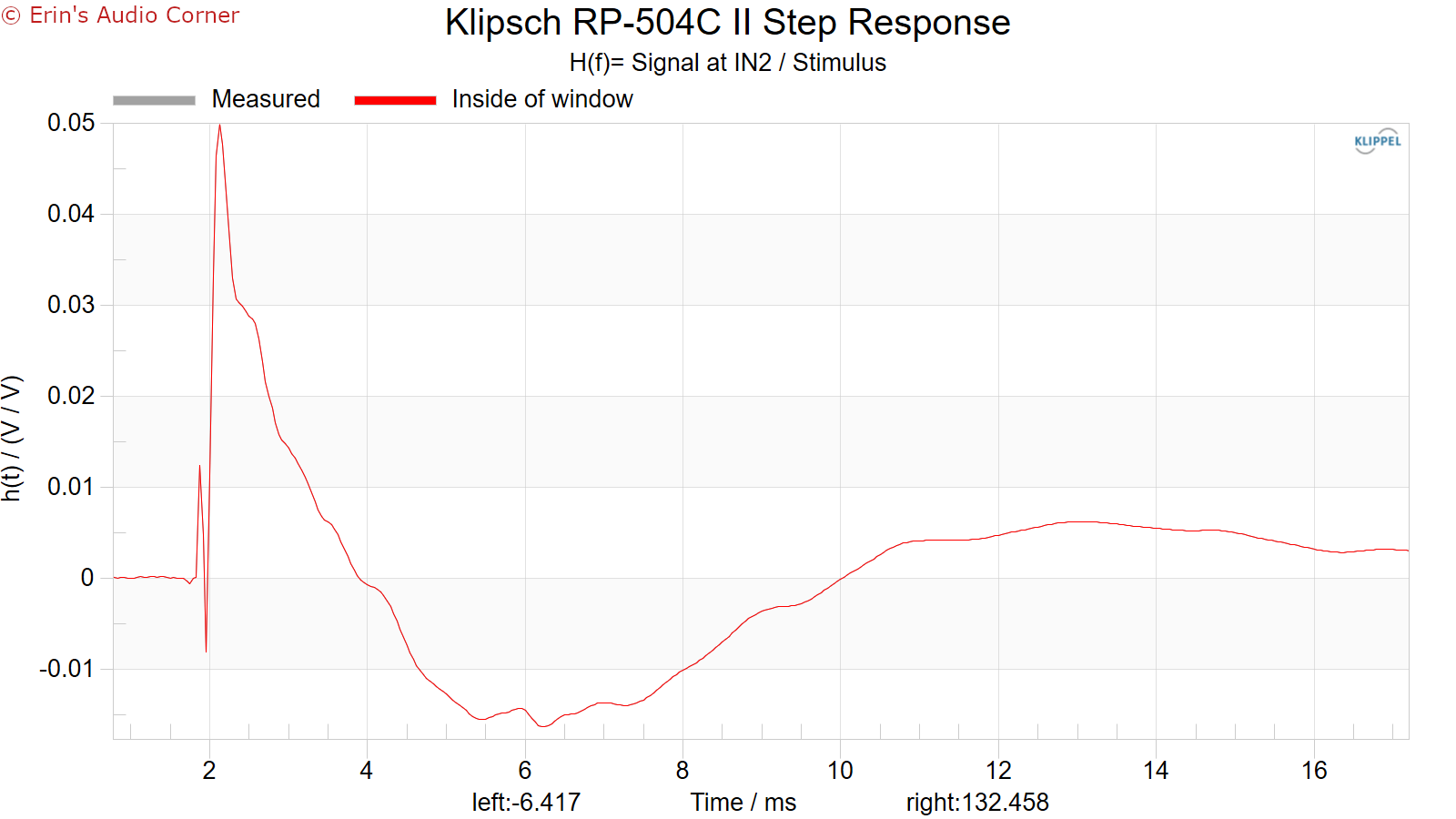
Group Delay
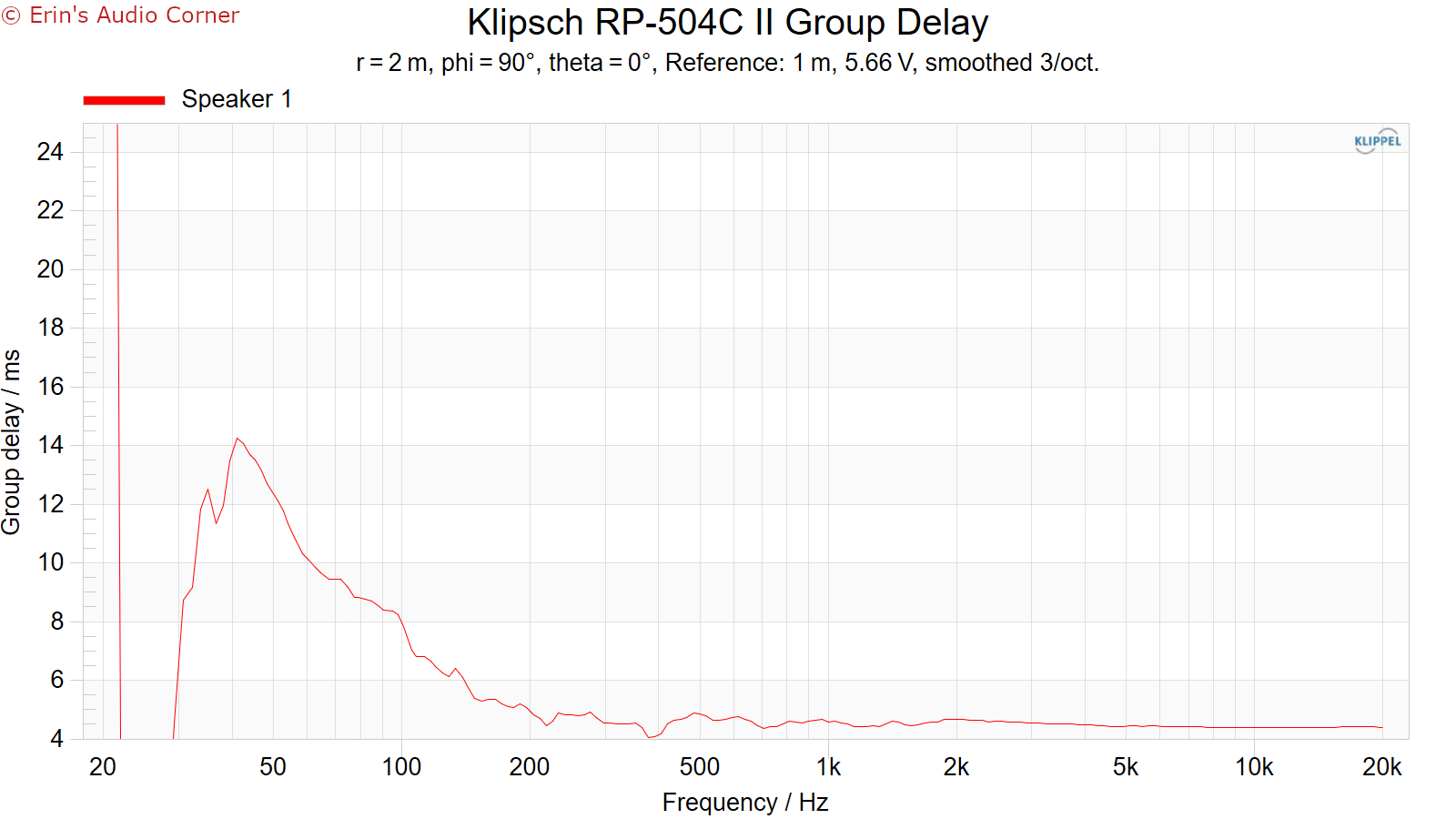
Harmonic Distortion
Harmonic Distortion at 86dB @ 1m:
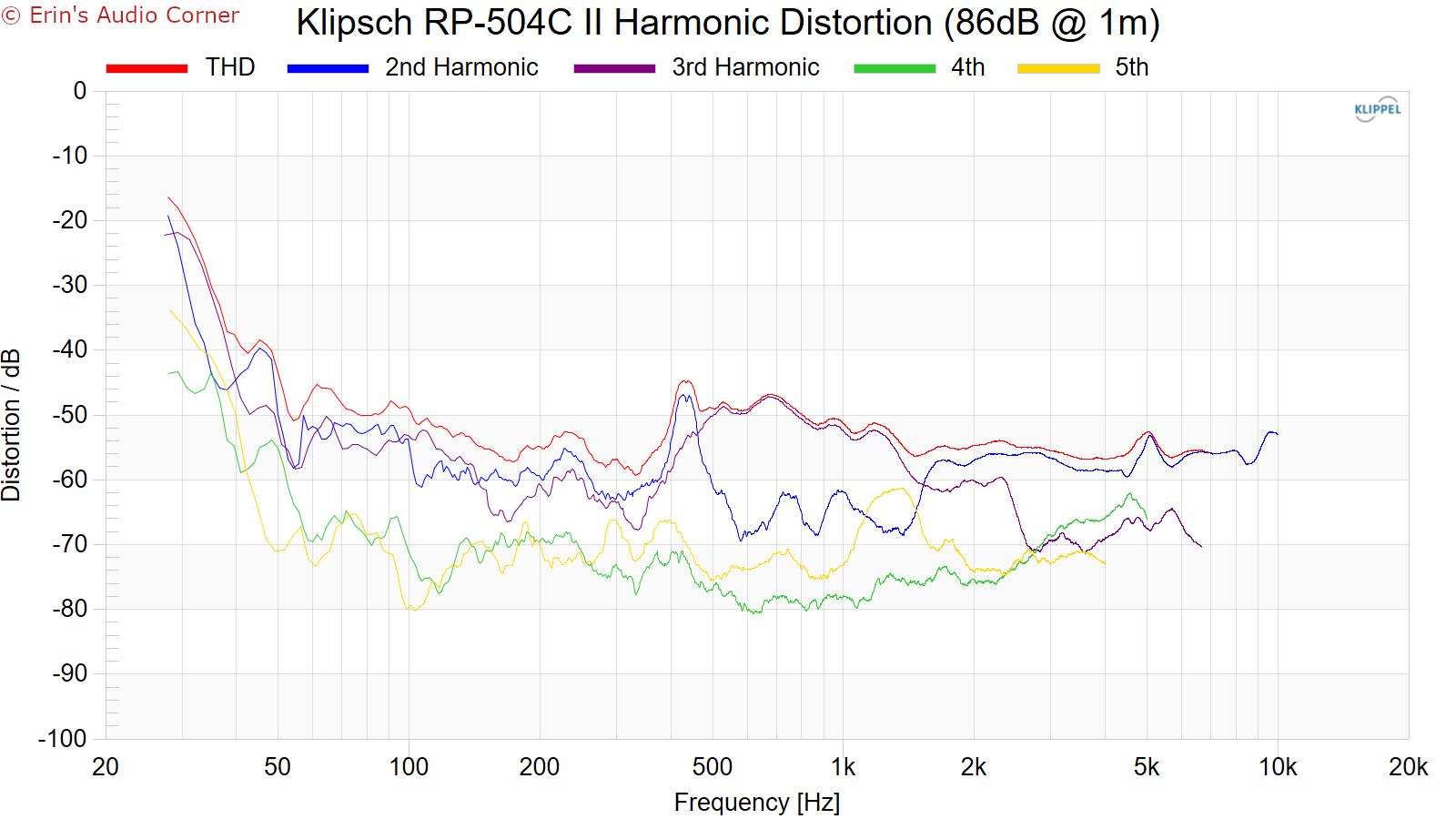
Harmonic Distortion at 96dB @ 1m:
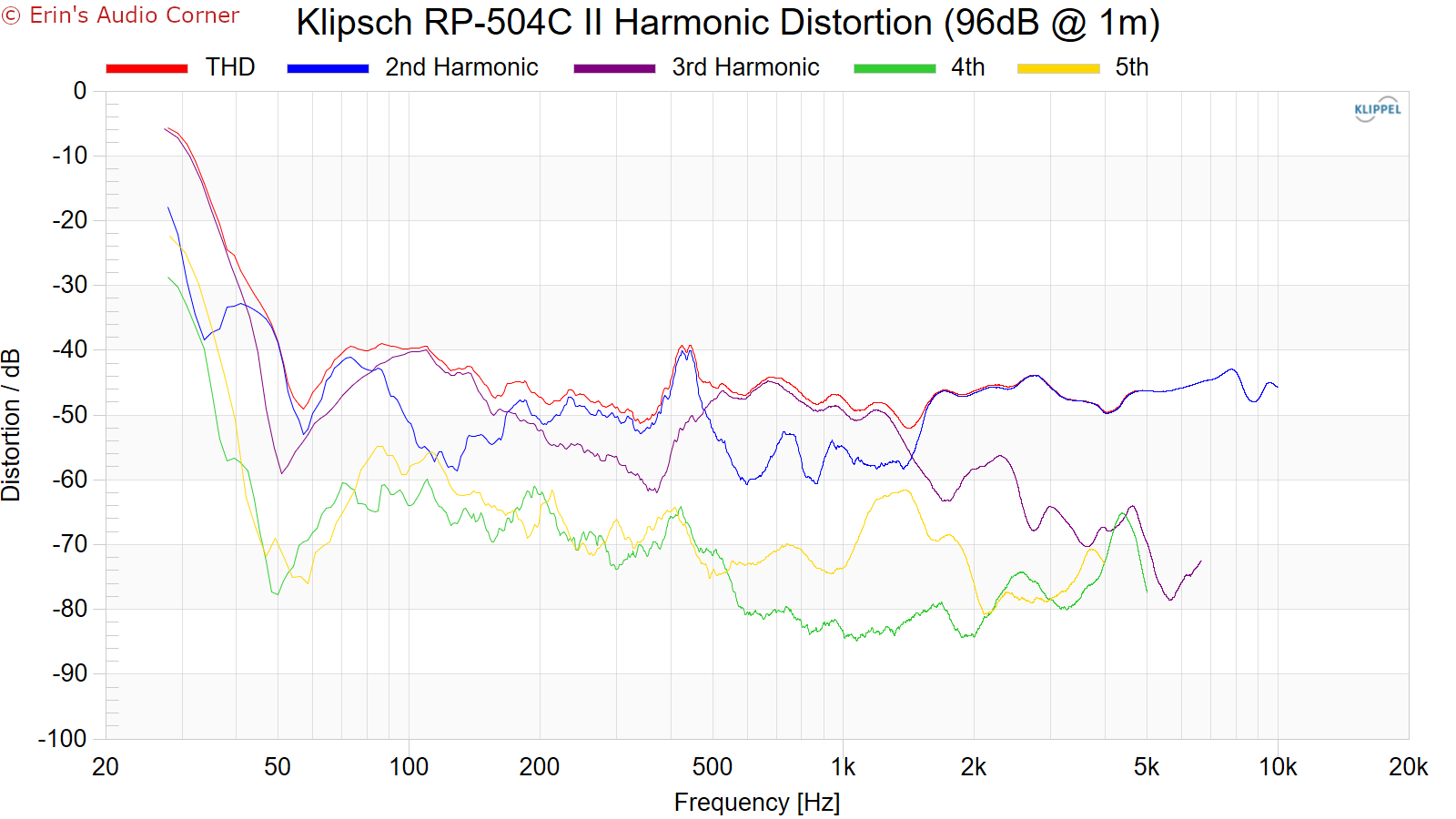
Dynamic Range (Instantaneous Compression Test)
The below graphic indicates just how much SPL is lost (compression) or gained (enhancement; usually due to distortion) when the speaker is played at higher output volumes instantly via a 2.7 second logarithmic sine sweep referenced to 76dB at 1 meter. The signals are played consecutively without any additional stimulus applied. Then normalized against the 76dB result.
The tests are conducted in this fashion:
- 76dB at 1 meter (baseline; black)
- 86dB at 1 meter (red)
- 96dB at 1 meter (blue)
- 102dB at 1 meter (purple)
The purpose of this test is to illustrate how much (if at all) the output changes as a speaker’s components temperature increases (i.e., voice coils, crossover components) instantaneously.
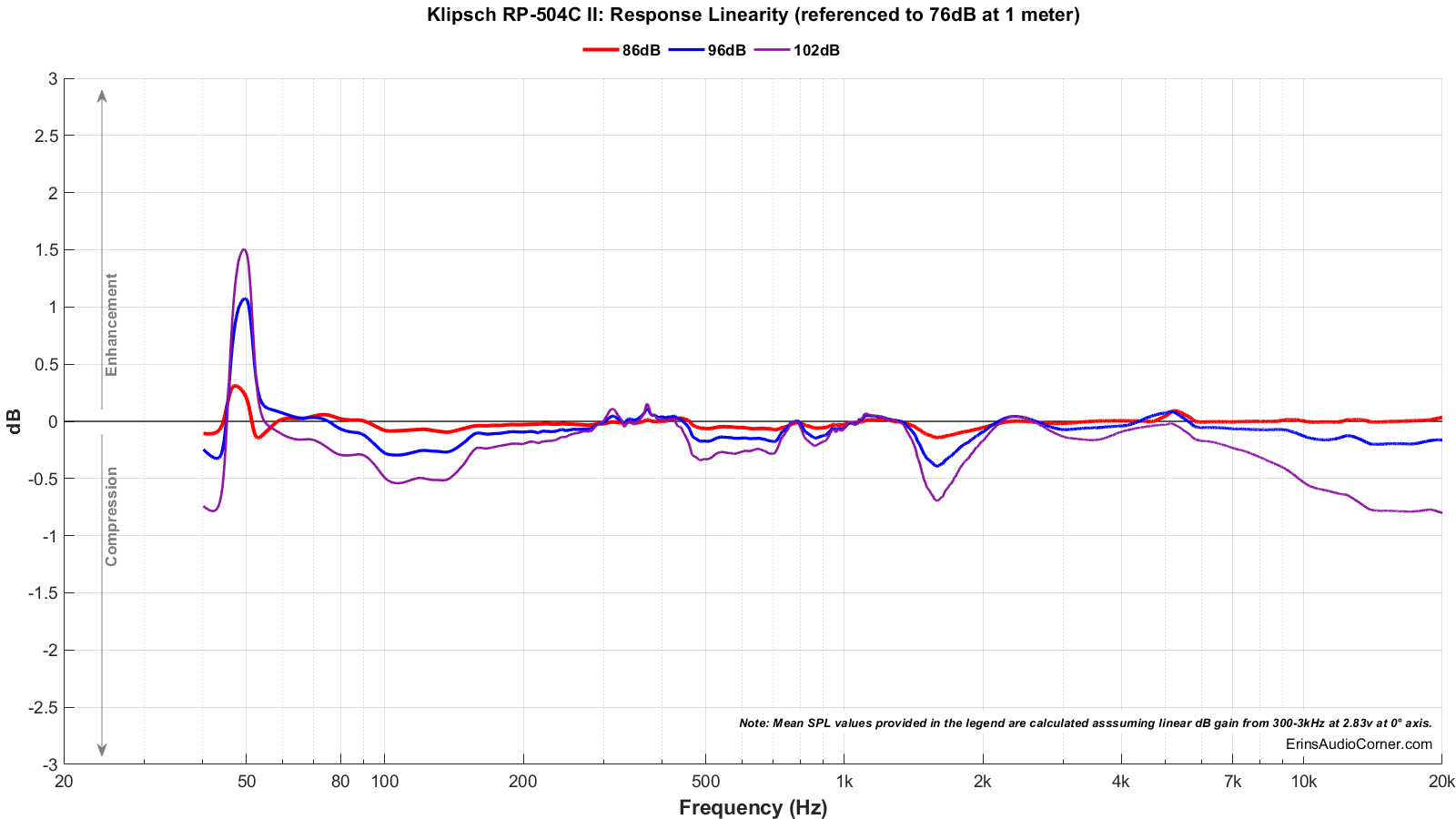
Multitone Distortion
The following tests are conducted at (4) approximate equivalent output volumes: 70/79/87/96dB @ 1 meter. The (4) voltages listed in the legend result in these SPL values.
The test was conducted in (3) manners:
- Full bandwidth (20Hz to 20kHz)
- 80Hz to 20kHz
The reason for the two measurements is to simulate running the speaker full range vs using a high-pass filter at 80Hz. However, note: the 2nd test low frequency limit at 80Hz is a “brick wall” and doesn’t quite emulate a standard filter of 12 or 24dB/octave. But… it’s close enough.
For information on how to read the below data, watch this video:
- Full bandwidth (20Hz to 20kHz)
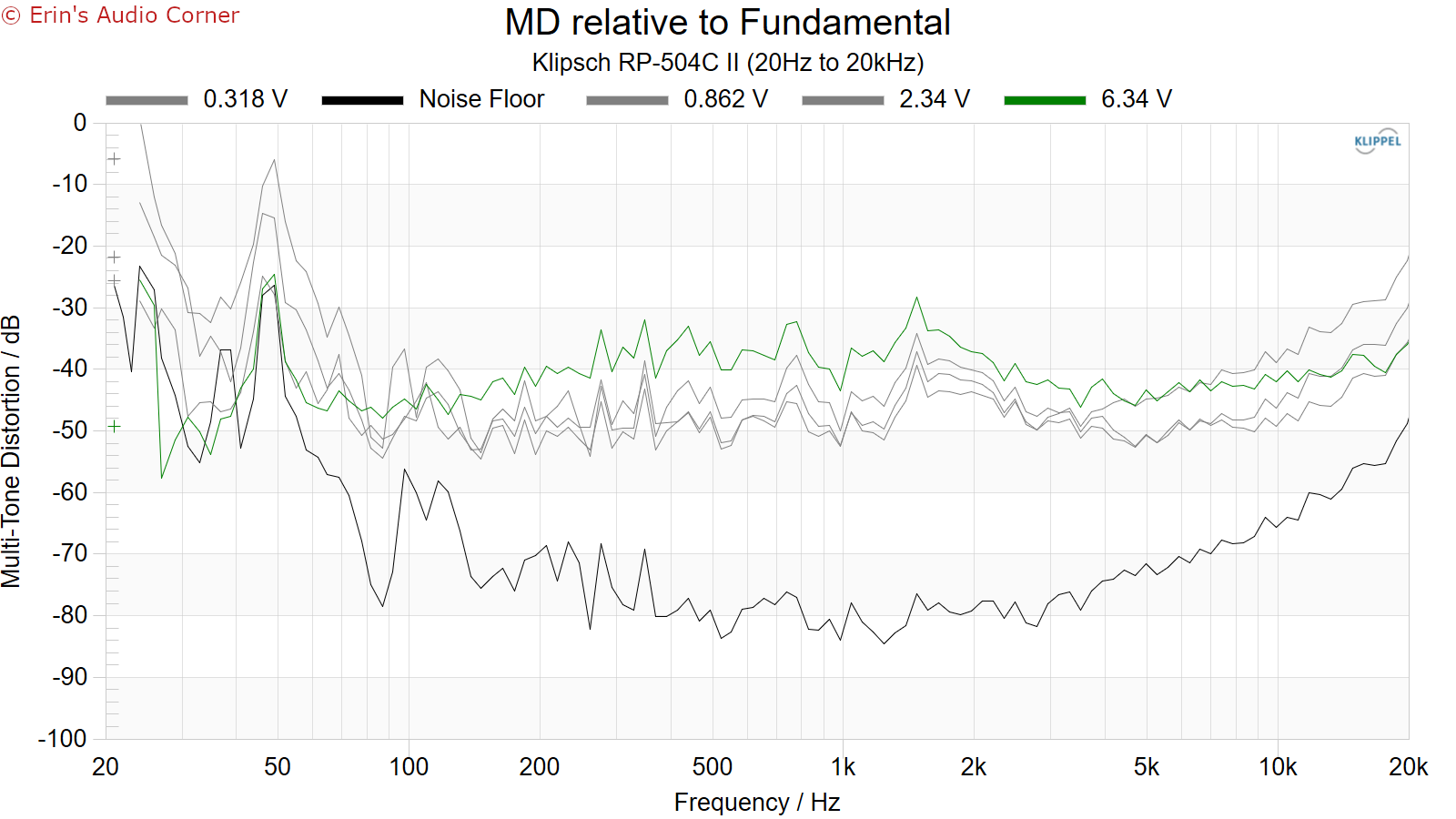
- 80Hz to 20kHz
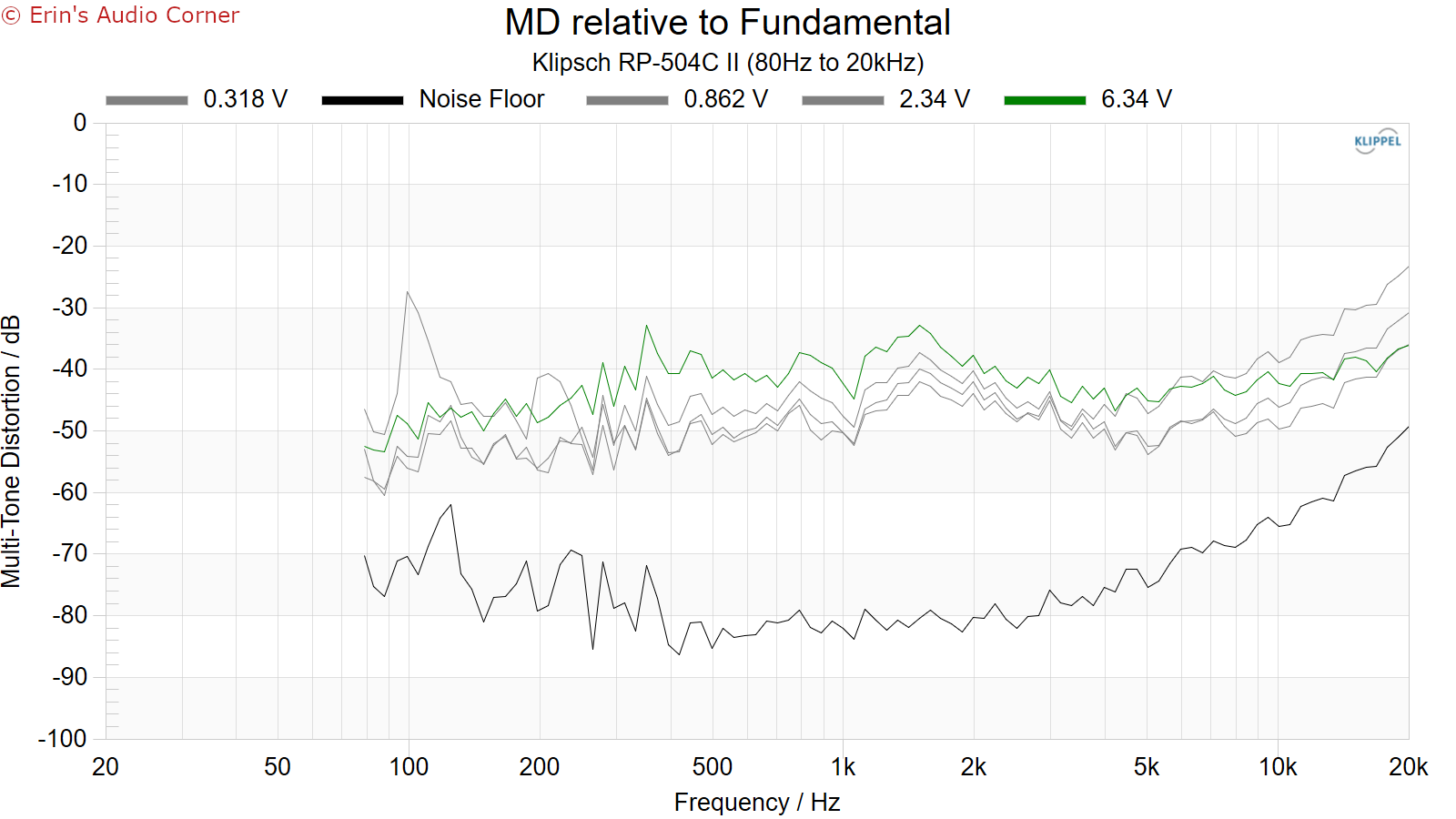
Parting / Random Thoughts
As stated in the Foreword, this written review is purposely a cliff’s notes version. For details about the performance (objectively and subjectively) please watch the YouTube video. But a couple quick notes based on my listening and what I see in the data:
- While the “II” version of the Reference Premiere (RP) series generally has a more toned down treble, we still see an elevated treble response rising to about +3dB above the average sensitivity levels above 2kHz.
- Sensitivity measures at about 89dB @ 2.83v/1m which is nice. However, the linearity of the speaker takes a hit thanks, in part, to the above-mentioned HF boost.
- Directivity in the horizontal region is poor with a narrowing response through the midrange (thanks to the spacing of the multiple woofers; a common trait of “toppled” MTM type designs such as this). This means that viewers/listening sitting to the side of the speaker more than about ±10° are going to suffer from some speech intelligibility issues. If you look at the Estimated In-Room Response you can get an idea of how the sound between seats will be if you were to sit at either 0° (on-axis) or as much as ±30° off-axis (I understand that 30° is extreme for most home theaters but you can use the other horizontal SPL data to mentally derive what the other angles might sound like). I recommend you watch my video in the “Foreword” section for more explanation.
- Output levels are quite good with low distortion and compression (mostly at or below 1% THD and 0.50dB at 96dB/1m).
Support the Cause
If you find this review helpful and want to help support the cause there are a few ways you can do so below. Your support helps me pay for new items to test, hardware, miscellaneous items needed for testing and costs of the site’s server space and bandwidth. Any help is very much appreciated.
Join my Patreon: Become a Patron!
If you find yourself interested in buying this speaker, please consider using one of my affiliate links below. It costs you no additional money but does help me earn a small commission which helps me pay for gear to test and other review gear.
You can also join my Facebook and YouTube pages if you’d like to follow along with updates.
